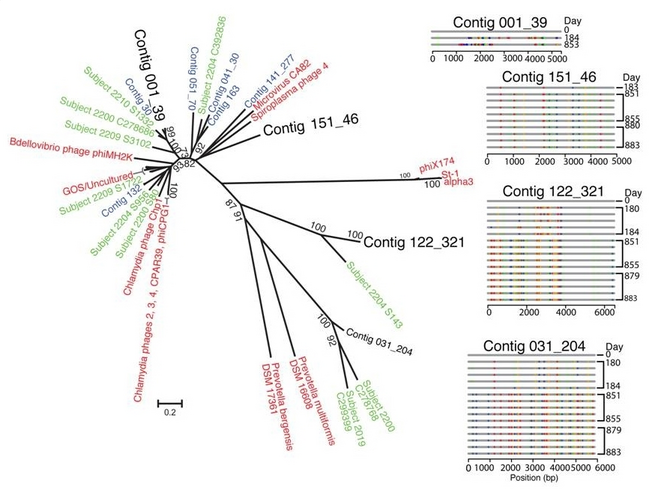Penn Study Shows How Viruses in Gut Bacteria Change
Humans are far more than merely the sum total of all the cells that form the organs and tissues. The digestive tract is also home to a vast colony of bacteria of all varieties, as well as the myriad viruses that prey upon them. Because the types of bacteria carried inside the body vary from person to person, so does this viral population, known as the virome.
By closely following and analyzing the virome of one individual over two-and-a-half years, researchers from the Perelman School of Medicine at the University of Pennsylvania, led by professor of Microbiology Frederic D. Bushman, Ph.D., have uncovered some important new insights on how a viral population can change and evolve – and why the virome of one person can vary so greatly from that of another. The evolution and variety of the virome can affect susceptibility and resistance to disease among individuals, along with variable effectiveness of drugs.
Their work was published in the Proceedings of the National Academy of Sciences.
Most of the virome consists of bacteriophages, viruses that infect bacteria rather than directly attacking their human hosts. However, the changes that bacteriophages wreak upon bacteria can also ultimately affect humans.
“Bacterial viruses are predators on bacteria, so they mold their populations,” says Bushman. “Bacterial viruses also transport genes for toxins, virulence factors that modify the phenotype of their bacterial host.” In this way, an innocent, benign bacterium living inside the body can be transformed by an invading virus into a dangerous threat.
At 16 time points over 884 days, Bushman and his team collected stool samples from a healthy male subject and extracted viral particles using several methods. They then isolated and analyzed DNA contigs (contiguous sequences) using ultra-deep genome sequencing .
“We assembled raw sequence data to yield complete and partial genomes and analyzed how they changed over two and a half years,” Bushman explains. The result was the longest, most extensive picture of the workings of the human virome yet obtained.
The researchers found that while approximately 80 percent of the viral types identified remained mostly unchanged over the course of the study, certain viral species changed so substantially over time that, as Bushman notes, “You could say we observed speciation events.”
Click here to view the full release.








